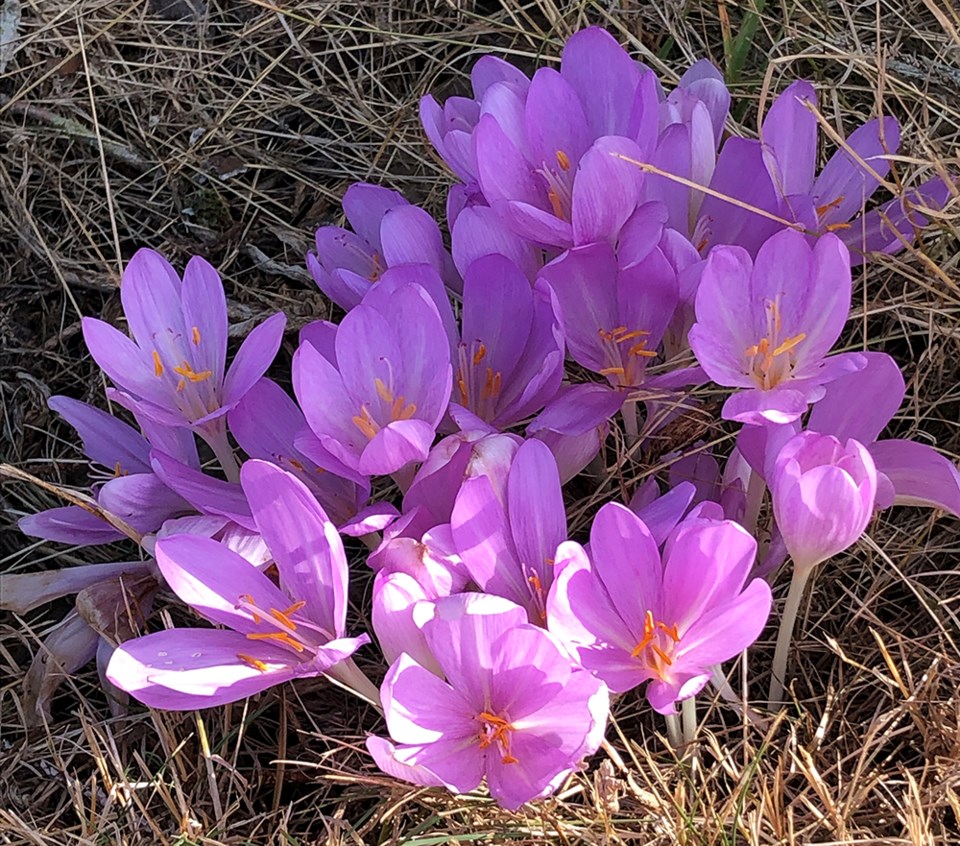They’re available only once a year and, unfortunately, so many gardeners miss out on these spectacular fall bulbs.
Fall blooming crocus are quite a novelty in our autumn gardens and a nice forerunner to their cousins which kick-off spring in about four months.
The showiest and most spectacular of the fall blooming varieties are the colchicums, which are native to Asia Minor, the eastern Mediterranean and into the Middle East.
There about 50 to 60 species of these unusual bulbs and the most well-known and most often grown in our part of the world is c. autumnale. These bloom prior to any foliage appearing so in earlier times, they were sometimes called "Naked Boys."
Colchicum corms are a good size and, depending on the supply source, can be similar to a small- to medium-sized apple.
It’s not unusual to get up to six flowers the first year. Well-drained soil is a must and they should be planted fairly deeply, about three to four times the width of the bulb. Watering them in well is another must-do and surprisingly, they will bloom within three to four weeks after planting.
These colchicums naturalize well and, once established, the patch can spread up to a meter in width for a very impressive display. Planted under trees and shrubs, they will reward you year after year with a beautiful showing.
The most commonly used colour is pink, possibly because it is usually the most reasonably priced, but also because it has the best perfume. As well as the single pink there is also a double pink and a double white available.
While in London one September, I noticed the white single, c. album, flowering throughout a castle lawn. As it was nearing dark, and the effect was quite spectacular.
The odd thing about colchicums is that, seemingly out of nowhere, in April the leaves will appear and grow to about 30 cm.
They look like an unusual variety of lily. At this point they need to be watered and have a little fertilizer applied as they are developing new corms underground. As quickly as they appear, they seem to suddenly die back and you won’t see them again until they flower in September. When the foliage first dies off the corms can be lifted, carefully divided, and replanted.
There are several other fall blooming crocus as well and, of those, the most well-known is the Saffron crocus or crocus sativus.
Native to Turkiye and Italy, this is the source of one of the most expensive spices, saffron. It takes about four thousand flowers to produce one ounce of this amazing spice. The flowers are a rich lilac-purple with a vibrant throat. They have orange-red stigmas from which the saffron is gathered. It too is a September bloomer and an interesting novelty to enjoy each fall.
These bulbs should be in most garden stores by late August but they tend to disappear quite quickly so, if you would like to add some unique colour to your garden this time of year, pick them up soon.



